Introduction
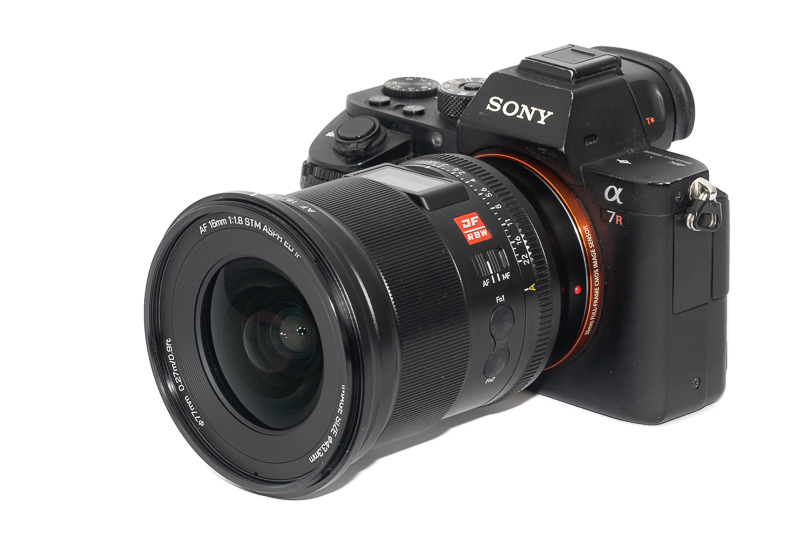
We all like surprises and this Viltrox 16mm 1.8 AF for fullframe was a big one. We previously reviewed the Viltrox 85mm 1.8 AF MKI and II and they were solid performers while being very affordable. But this 16mm 1.8 sounds way more spectacular on paper than an ordinary 85mm 1.8 lens and it even comes with some technology we haven’t seen anywhere else yet. Let’s have a closer look.
Update Oct 2024:
 You can see this review as a YouTube video here!
You can see this review as a YouTube video here!
In the video Martin also talks about how the Z-mount version of this lens performs. There have also been further sample images taken on a Nikon Zf added.
Sample Images







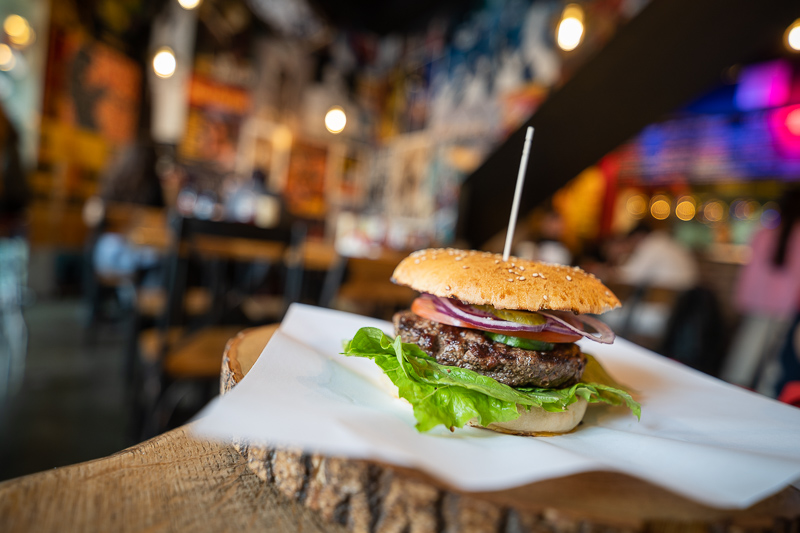


Most of the sample images in this review can be found in full resolution here.
Contents
Specifications
The Viltrox 16mm 1.8 AF FE has the following specifications:
-
- Diameter: 85 mm
- Field of view: 105.6° (diagonally)
- Length: 103 mm
- Weight: 560g (without hood and caps)
- Filter Diameter: 77 mm
- Number of Aperture Blades: 9 (rounded)
- Elements/Groups: 15/12


- Close Focusing Distance: 0.27 m
- Maximum Magnification: 1:9.3 (measured)
- Mount: Sony E
buy from manufacturer’s shop (use the code “PRnet” for 8% discount) | amazon.com | amazon.de | B&H | ebay.com | ebay.de (affiliate links) for $549
Disclosure
The Viltrox 16mm 1.8 AF FE was kindly provided free of charge by Viltrox for reviewing purpose for a few weeks.
Handling/Build Quality

In terms of controls this Viltrox 16mm 1.8 AF offers everything the Sony GM and later G-series lenses do and then some, so there is a lot to talk about here.
The focus ring has okay damping but a non-linear coupling. This means when rotating it slowly it takes about 180° from the minimum focus distance (0.27 m) to infinity, but if you turn it very fast it can even take up to 1080° for that.
When you turn your camera off the lens will remember the last focus position and will still be there when you turn the camera on again.
The aperture ring has 1/3 of a stop click stops – which you can declick by using a lever on the right side of the lens.
You can also set the ring to “A”(utomatic) and let the camera choose the aperture value or use the camera dial to change the aperture value instead of using the aperture ring.
The aperture ring feels very similar to the Sony FE 20mm 1.8G I reviewed lately, actually slightly better even.

On the left side of the lens there are two buttons (Fn1 and Fn2) and an AF-MF switch.
In AF mode Fn1 works as focus hold button – or whatever you set in camera for the lens button to do. Fn2 has no function here.
In MF mode you can toggle between two preset distances when pressing the Fn2 button.

What is a novelty is the LCD display on top of the lens. While the Zeiss Batis lenses also had such a display, it wasn’t half as useful as this one. This one shows the following information:
- depth of field scale
- focus hold when activated
- AF/MF mode
- preset distance setting A/B
- focus distance
- aperture value
I think those preset distance settings can be really useful for focusing in the dark at true infinity for astrophotography or for easily setting the hyperfocal distance – should you be relying on that.

This is still not all: we also have a rubber gasket and a USB-C socket for firmware updates to be found at the bayonet.
The outer casing seems to be made from a high quality polycarbonate and all markings on the lens barrel are engraved and filled with paint. The markings on the front retention ring seem to be only printed though.

The hood is the typical bayonet type made from plastic. It is made from two pieces and at first it looks like those of the GM lenses with rubber front bumper, but this is not the case.
The lens looks and feels well made: no unsightly seams in the casing as we have seen in early Tamron FE lenses and generally better than the earlier Samyang lenses like e.g. the AF 18mm 2.8. I have only used this lens for a few weeks, so I cannot tell you anything about its longterm reliability.

The Viltrox 16mm 1.8 AF is noticeably bigger than the Laowa 15mm 2.0 but only 40g heavier, this is because Laowa is using more metal for its casing. In this comparison you can easily see why I had an issue with the 7Artisans 15mm 4.0’s size: for being two stops slower it is simply too big.
AF performance
I am not shooting sports or fast moving animals/humans so if you want to know if the lens is fast enough for this or how it compares to other lenses in this segment you may have to look for a different review with a more detailed assessment of this aspect.
In everyday use I found the AF to be very fast, perfectly usable and also silent – except for a slight humming noise as long as the camera with lens is turned on.
Vignetting

| f/1.8 | 3.4 EV |
| f/2.0 | 3.4 EV |
| f/2.8 | 2.4 EV |
| f/4.0 - f/22 | 2.2 EV |
Very high vignetting figures are expected when it comes to fast ultra wide angle lenses but the Viltrox still shows about 0.5 EV higher vignetting at its widest aperture compared to the Laowa 15mm 2.0 and the Sony FE 14mm 1.8 GM.
Stopped down the values are similar to the Laowa 15mm 2.0 and about a stop higher than those of the Sony FE 14mm 1.8 GM.
The best lens in class here is the Sigma 14mm 1.8 Art, that shows “only” 2.3 EV at its maximum aperture and even improves to a mere 0.4 EV stopped down, but this is also a huge and heavy DSLR lens that is not really fun to use on a mirrorless camera.
It should also be noted that the vignetting figures of this Viltrox lens are not higher at shared apertures than those of the much slower 7Artisans 15mm 4.0 as well as NiSi 15mm 4.0.
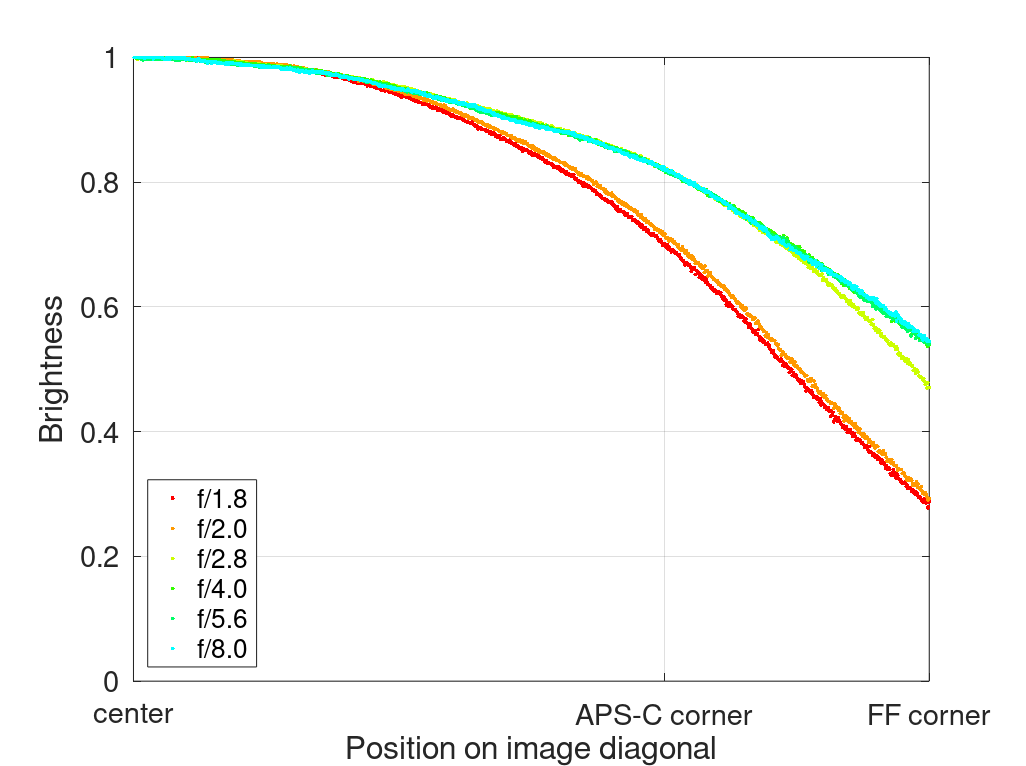
It is recommended to have a look at this article first to get an idea how this brightness graph works.
Sharpness
infinity (42mp Sony A7rII)

The Viltrox 16mm 1.8’s MTF graphs promise really good across frame performance from f/1.8 and I surely was a bit skeptical when I saw them – despite this lens’ complex optical design. But the performance is indeed very good. There is a small midzone dip for resolution but the contrast is great across frame from f/1.8.
The corners also benefit from stopping down to f/2.8, but I wouldn’t mind using this lens at f/1.8 whenever necessary.
The midzone dip of my Laowa 15mm 2.0 is a bit stronger and its corners also don’t look as contrasty, so Viltrox did a really good job here. I would need to review the Sony FE 14mm 1.8 GM first to see how they compare, but 14 and 16mm are also a pretty big difference, so this would not really be an apples to apples comparison anyway.
close 0.27 m, 1:9.3 (42mp Sony A7rII)
This Viltrox 16mm 1.8 AF does not focus as close as the Laowa 15mm 2.0 (0.15 m) or the NiSi 15mm 4.0 (0.20 m), but it surely makes up for that with its amazing image quality at its own minimum focus distance of 0.27 m.
If you are a regular reader you have probably read a few times that these ultra wide angle lenses have issues with field curvature at close focus distances. This is true for the Laowa 15mm 2.0, the 7Artisans 15mm 4.0 the NiSi 15mm 4.0, the Samyang 18mm 2.8 and plenty more.
But this is not the case with this Viltrox lens, the field is perfectly flat even at 0.27m and with the lens set to f/1.8. Pretty astonishing! I included a picture taken with the Laowa 15mm 2.0 for comparison.
Flare resistance
As always evaluating flare is a complex matter since you can get any lens to look bad if you push it hard enough and a slight change of scenario can affect results a lot.
With a strong light source in the frame you can easily catch artefacts like shown above. At wider apertures there is a subtle ring flare, at f/1.8 it is barely noticeable because of the higher vignetting but it becomes very noticeable as you stop down.
By f/11 also a line of green ghosts becomes more obvious.
Unfortunately sometimes I only discovered these artefacts later on the computer, like in this example:

Coma
One of the main applications for a lens with these parameters is landscape astrophotography and here good coma correction is of notable importance. At the maximum aperture of f/1.8 some coma is visible in the corners and this will also be visible with bright stars in these parts of the frame. Stopped down to f/2.8 the performance is really good though.
Sony A7rII | Viltrox 16mm 1.8 AF and Laowa 15mm 2.0 | 100% crops
The Viltrox at f/1.8 already perfoms better than the Laowa 15mm 2.0 at f/2.0, but the differences are even bigger at f/2.8 and f/4.0. This Viltrox looks similar to the Sony FE 14mm 1.8 GM that I haven’t tested personally yet – but plan on doing soon.
Distortion

The Viltrox 16mm 1.8 AF shows a low amount of wavy distortion. As for most Viltrox lenses a Lightroom profile is available, I expect this lens to be included in one of the future updates as well. Viltrox may also beat them by offering a profile for download on their homepage like they do for many of their other lenses already.
Bokeh

Not usually a playing field for ultra wide angle lenses, but the f/1.8 maximum aperture in combination with the 0.27 m minimum focus distance allows for some pretty spectacular compositions with nicely blurred backgrounds.
The bokeh quality is actually really good and in combination with the great sharpness at close distances this made me enjoy taking close up shots with this lens more than I thought I would.

You better watch out for the strong perspective distortion typical for a 16mm lens though, as objects not close to the center will be visibly distorted.


And you cannot really blur the background of bigger objects. The background of this chandelier looks barely out of focus at normal viewing distances, you would need to get really close or have it printed pretty big to notice it actually is.



Sunstars

Regular readers already know that an even number of aperture blades leads to distinct sunstars whereas this Viltrox 16mm 1.8 AF is using 9 aperture blades.
The alignment of the blades is pretty good though and we see nice sunstars from f/5.6 to f/16, similar to those we have seen from the Sony FE 20mm 1.8G.
The Voigtländer ultra wide angle lenses as well as the later Laowa ones and also the 7Artisans 15mm 4.0 and NiSi 15mm 4.0 show more distinct 10-pointed sunstars though.
If you want to know more about sunstars have a look at this article.
Chromatic aberration
lateral
Many ultra wide angle lenses show storng lateral CA, but this is not the case here. What remains is easily corrected by one click in e.g. Lightroom/Photoshop.
longitudinal
Considering the complex optical design with no less than 4 ED elements I would expect a really good performance in this category and the lens doesn’t disappoint.
Neither bokeh fringing nor purple fringing is anywhere to be found. If there was an Apo tag on this lens it would have been justified.
Conclusion
good
|
average
|
not good
|
When it comes to the Chinese lens manufacturers so far the one with the most advanced products was Laowa. They were the only ones that were able to create really unique and very complex (optically as well as mechanically) lenses that you couldn’t find from any other manufacturer. The 9mm 5.6, 15mm 2.0, 28mm 1.2 and 35mm 0.95 lenses are only a few examples for this.
But in my opinion this Viltrox 16mm 1.8 AF FE is a real gamechanger. In almost every category it improves upon the Laowa 15mm 2.0, but not just that: it adds a competitive modern AF system and the most useful and advanced controls found on any E-mount lens (except for some of the high end tele lenses) highlighted by its flashy but also useful LCD display. And while doing all that it even undercuts the Laowa’s price. The 7Artisans 15mm 4.0 and NiSi 15mm 4.0 look like completely outdated dinosaurs next to this Viltrox lens.
Points of criticism are scarce. The vignetting is high at f/1.8 to f/2.0, but this was probably a tradeoff necessary by avoiding a bulbous front element and allowing for easy use of standard filters.
Flare resistance could be better, but considering the competitors’ performances and the Viltrox’ more complex 15 elements design this might actually be asking too much here. And this isn’t a small lens by any means.
To me it was only a matter of time before the Chinese lens manufacturers start to outdo the Japanese ones and this lens might be where it begins. I don’t know how the people at Viltrox did it, but they got a lot of things right here.
buy from manufacturer’s shop (use the code “PRnet” for 8% discount) | amazon.com | amazon.de | B&H | ebay.com | ebay.de (affiliate links) for $549
Alternatives
All the alternatives are covered in our Guide to 9-18mm ultra wide angle lenses for E-mount, so I will only talk about the most obvious ones in detail here, meaning native ultra wide angle faster than f/2.8.
AF
Sony FE 14mm 1.8 GM:
The 2mm difference in focal length are a lot more than they sound like on paper. The Sony is also a great performer and it might fare better in terms of flare resistance, it definitely shows slightly less vignetting. It makes use of a bulbous front element though and you cannot use standard filters on it. It is also 100g lighter and 3 times as expensive.
buy from amazon.com | amazon.de | B&H | ebay (affiliate links) for $1598
Sigma 14mm 1.8 Art:
The aforementioned Sony lens offers least as good performance in a significantly smaller package for the same price. The lower vignetting figures are the only thing this lens has going for it these days, so I find it hard to recommend to E-mount users.
buy from Amazon.com | Amazon.de | B&H (affiliate links) for $1599
MF
Laowa 15mm 2.0 Zero-D FE:
This lens has been my choice for landscape astrophotography and whenever I needed an ultra wide angle lens in places where I couldn’t use a tripod since 2017. If you don’t mind its bigger size or the less distinct sunstars – or you simply prefer a real manual focus lens – this Viltrox lens is the better choice for most.
buy from manufacturer’s shop | amazon.com | amazon.de | ebay.com | ebay.de | B&H (affiliate links) for $649
Sample Images



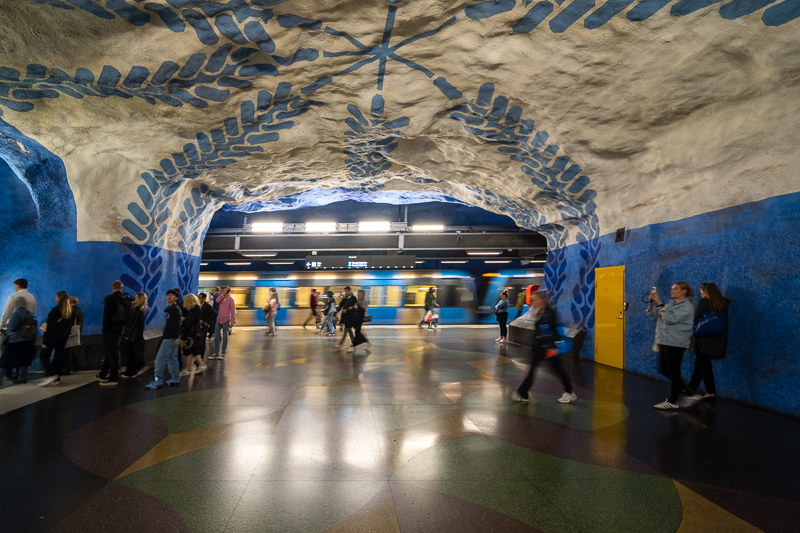





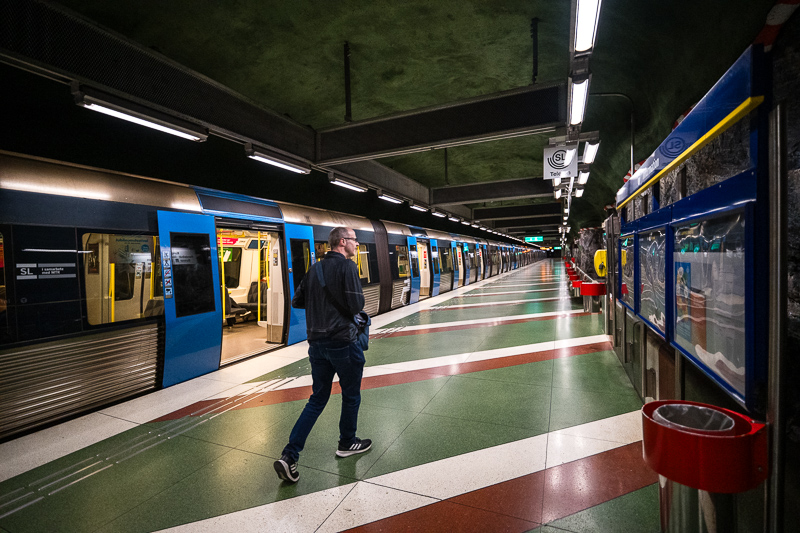

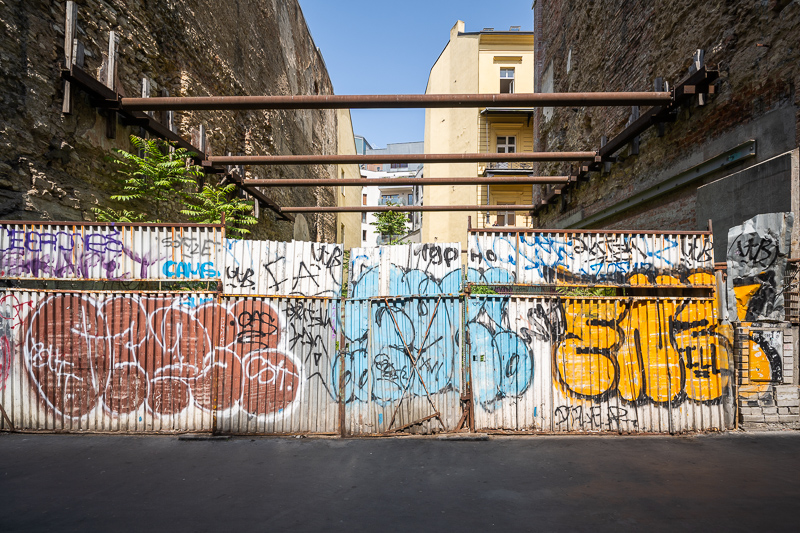











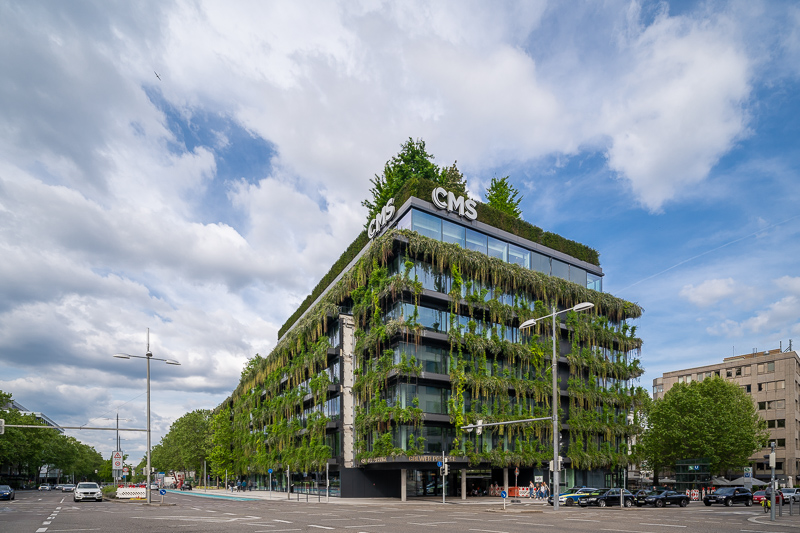
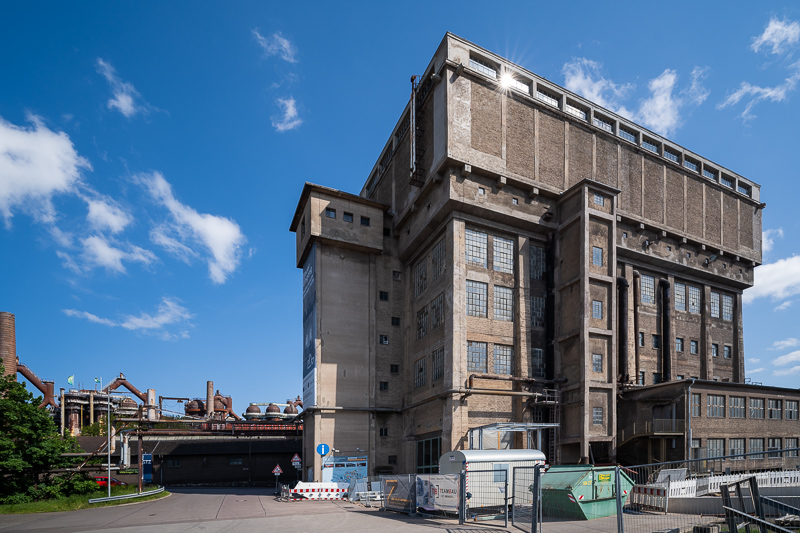



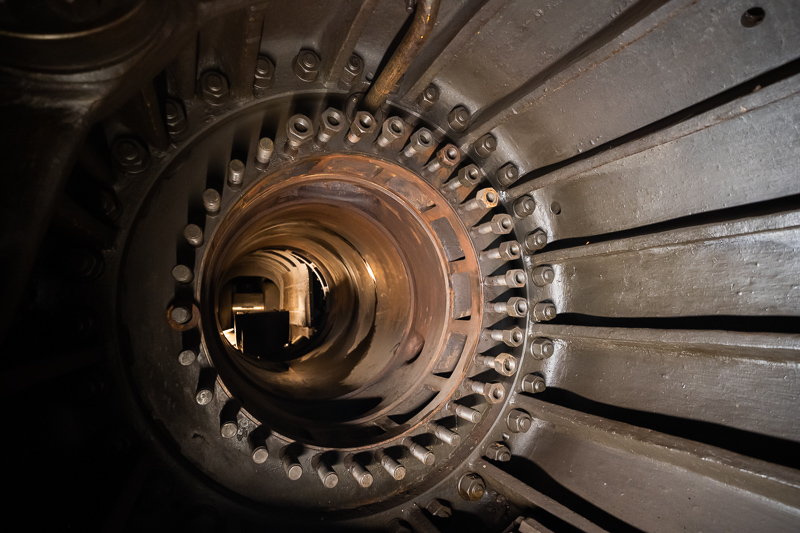





Most of the sample images in this review can be found in full resolution here.
Further Reading
- All Lens Reviews
- Lens aberrations explained
- How to take better pictures?
- Guide: 9-18mm lenses for Sony FE
- Follow us on Discord
Support Us
Did you find this article useful or just liked reading it? Treat us to a coffee!
![]()
![]()
![]() via Paypal
via Paypal
This site contains affiliate links. If you make a purchase using any of the links marked as affiliate links, I may receive a small commission at no additional cost to you. This helps support the creation of future content.
Latest posts by BastianK (see all)
- Review: Thypoch 21mm 1.4 Simera - July 12, 2025
- Review: SLRmagic 50mm 0.95 Hyperprime LM - July 5, 2025
- Full Resolution Pictures getting fixed - July 4, 2025
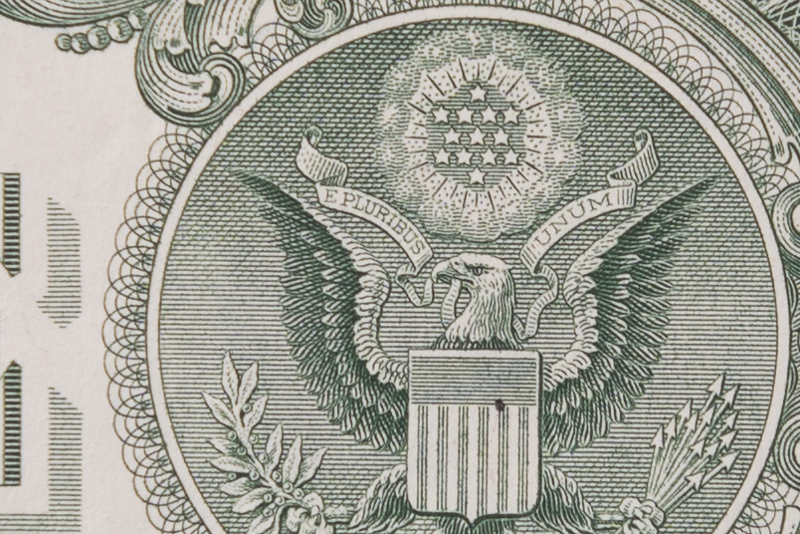



















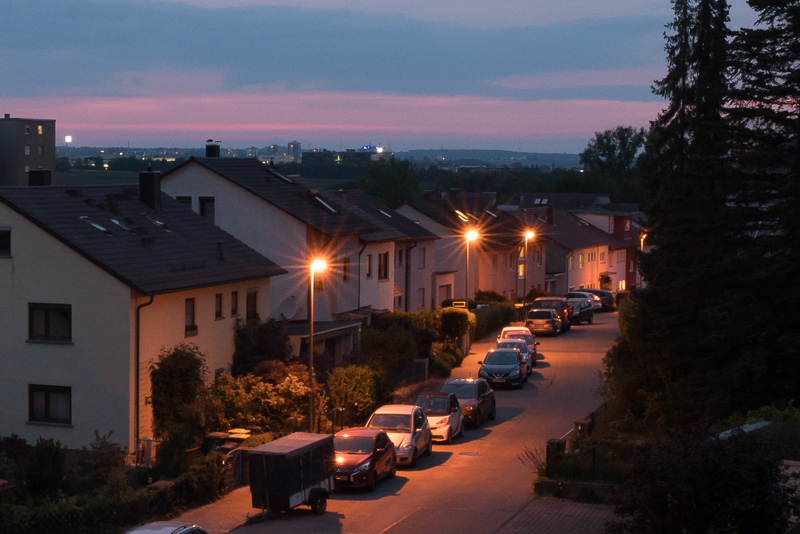

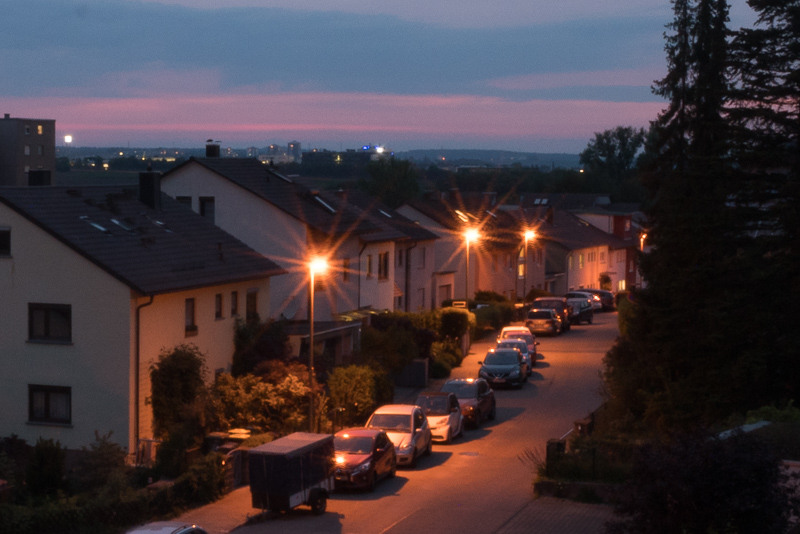





This honestly is a very well performing lens! I’m stunned by some of the rendering and bokeh! Great value for money too!
Not only you!
Thanks for the review, Bastian. It’s an impressive little beastie. I’m shocked they got the distortion lower than the Batis 18.
Bastian – thank you once again for another excellent and informative review. They are always so good. I have noticed that your shots for recent reviews are looking really, really good these days. In addition to being good pictures, technically they look like a step up. The contrast is really good and the colours very clean and vivid without being over saturated. Are you doing something new in lightroom? I’d love to know. David in Rye in the UK
Thanks David!
I am actually not sure about any changes in the workflow,
maybe it’s just the spring colors after the grey winter 🙂
great photos
I was ready to pull the trigger on the Laowa 15mm until suddenly this lens appeared 🙂 Thanks for another great review!
😀 Exactly!
I know the focal length is much different, but I wonder how it compares to Sony 20mm F1.8 in terms of astrophotography?
I see the comma and chromatic aberrations corrections are good. Would be great if someone post actual night sky pictures side by side.
I have a Nikon version since july 2024, and it does a good job on stars (Nikon Z7 / Nikon Z6 full spectrum)
While pixel peeping, you would see some coma wide open at the clearest stars, it’s nearly gone at f2.2 and it’s gone at f2.5.
Yes the Nikkor Z 20mm f1.8 S is a bit better, but 20 mm is easier to correct. Vignetting is less nice but to get the best overall astro results , get a Sigma 14mm f1.4 Art or the 14mm f1.8 of Sony. But thats another budget level.
This lens is not suitable for IR (hot spots, flaring)
wow this is incredible, I hope this is a new trend for viltrox, I will be buying this lens, and would happily replace a lot of my existing kit with viltrox if they can repeat this success with other lenses especially at this price point. one thing I wish was different would be I wish that slow turning would make it take 1080 degrees to move it from mfd to infinity. fast turning for precision focus feels counter intuitive
The 180° rotation is fine actually, better avoid turning it fast altogether 🙂
Very interesting lens indeed, one to seriously consider. Great review, and I knew you liked the lens as soon as I browsed the image samples; they look inspired. Now they can think about competing with the 9mm Laowa. The only thing I don’t like is this lens being AF, but that’s a matter of preference. I also always consider the longevity of modern AF lenses, but unlike some 1st party lenses, this one doesn’t cost a fortune.
Leider werden von den Objektiv-Herstellern immer nur die Schnittbilder der Linsen gezeigt, aber nicht wie diese in einer Mechanik miteinander präzise und dauerhaft verbunden sind!
Das möchte man wohl nicht zeigen, dass das Innenleben der AF Objektive überwiegend aus verschweisstem Plastikteilen (Kunststoff) besteht, weil das kleine elektrische Motörchen die Linsenglieder schnell und dauerhaft hin und her bewegen sollen! Reparaturen dürften daran eher schwierig und teuer sein, wenn überhaupt!
I’m really interested in the lens since i got aware of it. Mainly cause i am searching for an affordable lens for astro. I’m only a hobbyist and couldn’t really convince myself that getting a 1000€ lens just for astro is reasonable.
Did you manage to get some astro shots in the meantime?
Do you think that this lens will be a valid budget option for this?
Thanks in advance
It will be a very good choice for this, the city coma samples I am showing are way more demanding than actual stars.
amazing performing lens for the price.
I always struggle to see the usecases where i would need a fast UWA, because i dont typically do astro, also I dont find AF particularly important for UWA..
f1.8 or AF is not necessary for landscape, architecture, but i see you used it quite a bit in dimly lid interiors, which i could see me do on a regular basis, good performanc even at closer distance seems helps too.
great review, thanks a lot again, It’s a pity that there is no Z-mount version yet. With adapter you introduce issues and and tilt, but I’m still concidering it for astro lapses.
Yet another great review, thanks. While on the Viltrox topic, do you have any intention of reviewing their recently released 28/1.8? C’mon, say yes…please…say yes…
Cheers
Actually so far they were not willing to send me one because they say the 16mm is the better performer, but I am on it 🙂
How would you compare with the Voigtlander CV15? MF but good. Slower though. Worth trading in for?
In terms of optical performance the Viltrox is superior, except for maybe flare resistance and sunstars depending on your taste.
The size difference is substantial though, if you do only landscape/architecture shooting at f/8.0 to f/11 probably not worth the trade,
if you would benefit from a faster max. aperture or AF or less vignetting worth it.
hi Bastion, thanks for the review!
I had a question about colorcast. how does this lens compare to laowa 15mm 2.0? I know my laowa shifts to green in the corners which is frustrating for interior architecture photography.
any insights on this topic would be greatly appreciated!
thanks again
Hi Landon,
I went through all the pictures I took with this lens again.
I did not see any picture with an obvious color cast and I also did not correct any of the sample iamges for it, so I think it performs better than the Laowa here.
However: the color cast is highly camera-dependant, so depending on what camera you are using it may be more or less of an issue.
In the compassion with the Laowa it reads “Now – if you don’t mind its bigger size or the less distinct sunstars or you simply prefer a real manual focus lens – this Viltrox lens is the better choice for most.”… I think the manual focus part is backwards? Or it just reads funny I dunno.
Excellent review btw, this review and Dustin’s alone easily sold me on it… I had my eye on the Laowa for the longest time but yup, your meme is accurate heh.
I tried to make it clearer.
What about servicing those lenses in Europe?
German distributor gives two years of warranty.
….if only, why it isn’t a Viltrox FE 16mm F1.4 PRO series lens…not for the F1.4 of course, but a PRO series, minus the LCD, and a better build quality, and perhaps even more so, a tad better IQ, less distortion, and better multicoatings… 🙂
Did you have any of their Pro lenses in your hand?
Do you actually know if they do any better in terms of build quality, distortion and coatings?
As I see it their only “pro” lens is the 75mm 1.2 and comparing a 75mm 1.2 to a 16mm 1.8 is also a bit interesting.
Guys, don’t fall for these cheap marketing tricks, a red, blue or gold ring (or especially a red Leica dot) on the casing means nothing about the quality of the product.
Hi Bastian!
Great review once again of a very interesting lens!
What are your thoughts on comparing the Viltrox 16mm 1.8 to the Samyang 18mm 2.8 AF? I know, the 2mm make a big difference though; but size and weight favor the Samyang. I think, it‘s a pretty decent lens for its price that you just can drop n any bag as it‘s so small and light. Do you think it is worth upgrading though?
And how did you experience the AF in low light situations (concerts) with the Viltrox?
Hi Frieder,
in terms of optical performance the Viltrox is better at f/1.8 than the Samyang is at any aperture.
AF was also fine even in dimly lit environments (after all, 16mm is not that demanding).
If it is worth upgrading depends a lot on how you use the lens.
If you mainly use the Samyang at f/8.0 to f/11 it is also fine and the difference would not be huge (still there though).
If you think you can make good use of the f/1.8 aperture (e.g. for concerts or astrophotography) I think it might be worthwile to keep the Samyang as a small option when you don’t need a lens that fast.
And your thoughts on this lens as compared to the Sony 20 1.8? Obviously wider, but any other feature that stands out in comparison? Which would be better for video on a gimbal?
Optical performance is very much comparable.
Pick the one whose focal length fits your needs better.
I don’t do video with a gimbal, but I am guessing the more compact and lighter 20mm 1.8 may have a small advantage here.
I have been trying to answer this question add well. I bought both to test and Need To return one. I want to use them mostly for wide angle street photography to compliment my 35 1.4gm. I love the portability and weight of the Sony 20mm but I like the extra 4mm I get from the viltrox despite its weight and size. Someone help me decide 😔
I found my copy to be unreliable when it comes to AF performance, inaccurate. I often end up doing a better job with manually focus than with the lens AF. I have an A7 iii maybe it’s the camera (lower pixel density, older AF in-camera software). I don’t know really…
I don’t know if I’m alone here.
As you can see I also used the A7III for most of the pictures in this review and I did not encounter any such issues.
Hi Maxathier
I have the same issue with the lens AF where the distance is > 5 meter
It looks ok but pixelpeeping it is not always perfect. Using DMF mode solved the issue for me.
@Bastian
Thanks for the review, I own the NiSi 15mm and the Viltrox, use the NiSi 15mm for the sunstars but the Viltrox is a sharper and better for shooting in low light. The NiSi does have more character.
Great lens, great photos, compliments
Thanks!
Hello all.
I’ve to decide for a new lens, replacing my Samyang 14mm f/2.8.
Sony 14mm f/1.8 or this Viltrox.
In addition I own the Sony 20mm f/1.8.
Any recommendation for me?
Sony 14mm GM or Viktrox 16mm?
Thanks for hints.
Kind regards,
Adrian
Both nice lenses. The Viltrox sample I had was a little sharper than the GM sample I had.
As you already have the 20mm it might make more sense to get the 14mm though, as you may feel the 16mm could be too close to the 20mm.
Hi Bastian👋
Thank you very much for your informative and useful content.😍
I intend to buy this lens , May I download some of the raw files? 🙏🙏
I uploaded some for you here.
Thank you for this review and your thoughts. I’m going to sleep on it, but I will probably jump on this lens. I donated on PayPal. Your work is way worth it! Thank you
Thanks a lot, greatly appreciated!
I see that in January 2023 one of your recommended lenses was the Laowa 15mm. May I ask, under which conditions would you recommend the Viltrox 16mm over the Laowa 15mm?
Thanks again,
Scott
Any, unless you want a smaller manual focus lens.
Thank you
Nice review!
for some additional info, got one since july 2024 for Nikon Z: This lens is great for astro, coma from clear stars nearly vanishes from f2.5 .
Infrared performance is mediocre, (IRIX 15 mm f2.5 is great for IR, or the even much cheaper compact Viltrox 20 mm f2.8)
Hi,
I do a lot of Aurora chasing on a budget and can’t afford sigma 14/1.8. Do you think this will tick the boxes esp manual focus/infinity in harsh conditions / night.
Currently I manage with my Nikon and F2.8 lens or a DX Sigma 18-35/1.8 which works well but keen to use my Sony FF for this purpose.
Thanks in advance.
Yeah this Viltrox will work very well for that task.
Many thanks, I am grateful for your so prompt reply. could you say if 20/2.8 (cheaper and lighter) would be a compromise vs expectedly heavier and expensive 16/1.8, although not quite like the mainstream ones and in your experience am I likely to have similar or better results with 16/1.8 for both landscapes and nigh skies etc as asked before.
16mm 1.8 is way better for your task than 20mm 2.8.
Bastian – on the strength of your review of the Viltrox 16mm (plus a lot of thinking), I bought the lens. My initial shots indicate that the lens behaves just as you found in your review – so thank you.
Cheers
David
Glad you like it!
Hey Bastian. Do you have any advice on which Sony body is currently regarded as the best for Astro? I have a trip planned, have been using the A7R2 since its release, and am wondering if it’s time for a new body. Thanks for your help.
I don’t think there are that huge differences anymore.
Also depends how you shoot (guided/non-guided/pano/stacking).
I was first using the A7s, but the A7III was pretty much just as good while having more pixels, so I am using that one now.
I didn’t really follow if any of the new models are better, but certainly not enough for me to buy a new camera.
Hola. Gracias por la excelente reseña. Soy aficionado y recién empezando asi que necesito consultar ¿todo lo arriba mencionado se cumple igual para este lente pero con montura para Nikon Z? ¿O son lentes completamente diferentes? Gracias
The Z Version is included in the review. What is written applies to it as well.
I broke down and bought this lens as a result of the consistently good reviews across the net. What really sold me though was the 77 filter size. I already have several lenses with that size and I don’t like the idea of a bulbous, exposed front element while trekking in wilderness. Plus the price point and weather sealing. ALSO, it is the SAME lens now available for Z mount. Since the lens doesn’t need much in the way of correction, it can be used quite simply on the Z via an adapter. I have the Sony PZ 16-35 and it’s distortion is just nuts.